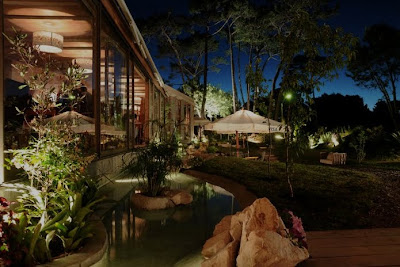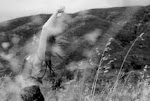
Contrary to popular belief, Punta del Este is so beautiful during spring time. Of course, although just a hop away from Buenos Aires, the weather in Punta is sometimes drastically different than here. Like most beach towns, you have that sea-breeze and freshness that you don't have in the city which is much warmer and less windy. Yes. Sometimes, the wind in Punta is a pain, but you can still do pretty much anything you want...
So I thought I’d share with you what I like to do when it's not summer and I can't go to the beach and be a beach bum all day. I consider myself a beach person. I’ve always loved the beach. My mum lived in Hawaii for a very long time, and to me, that was bliss. Just going there and staying with her for months at a time. That is when I started to surf. I became one of "them" lol.
Anyway, when it's cold in Punta, I like to SLEEP. This time around, I was asked: "how can you sleep so much". I can always sleep "much" but when I'm by the ocean and all you can hear is the roaring, hypnotizing sound of the waves and birds, how can you possibly not sleep so much? So I'll sleep like 10 hours or 12. I get up late and I have a good breakfast (something I don't do in ba) I’ll go for a morning walk on the beach or play tennis (which for a person who is not so good, like me, demands an enormous effort - cause of the wind, I mean). Then, a nice home-cooked lunch or maybe go to a yummy place such as Fasano (which opens all year round), La Huella or the Yatch Club, which is also fun. Usually, if we do go out for lunch, we'll run into friends. You would be amazed how many people go there all year round. Years ago, this was a summer destination only (from December to March). That has changed.
After lunch, I'll read a book and listen to music, chill for a while. In the afternoon I like to go for a swim (indoor pool, I'm not crazy, but you do see people going for a swim at the beach). How do they do it? I'll swim for about half an hour, relax, and maybe swim a little more. Other afternoon options are riding horses, biking, visiting friends, spa treatments or visiting the small art galleries and shops. There is this one book store (it's in the peninsula, actually) that I love. It's called El Virrey. I can spend hours in there. Boutiques are also nice to visit. I've seen some new ones popping up lately and they have some very cool stuff. Wool sweaters in Uruguay are the best.
At night, we’ll have friends over for dinner or go out. This time we did a little bit of everything cause some friends from Villa la Angostura were in Punta also, so it was nice to have them and other friends over for dinner and drinks. Spending time with friends is my favorite part.
Hope you have a chance to visit Punta whether it’s during the summer, or anytime. It’s a truly beautiful town with a special energy that will make you feel GOOD.
Do you often take mini-breaks? what do you like to do? what relaxes you?
Photo: Punta sunset by Mich































